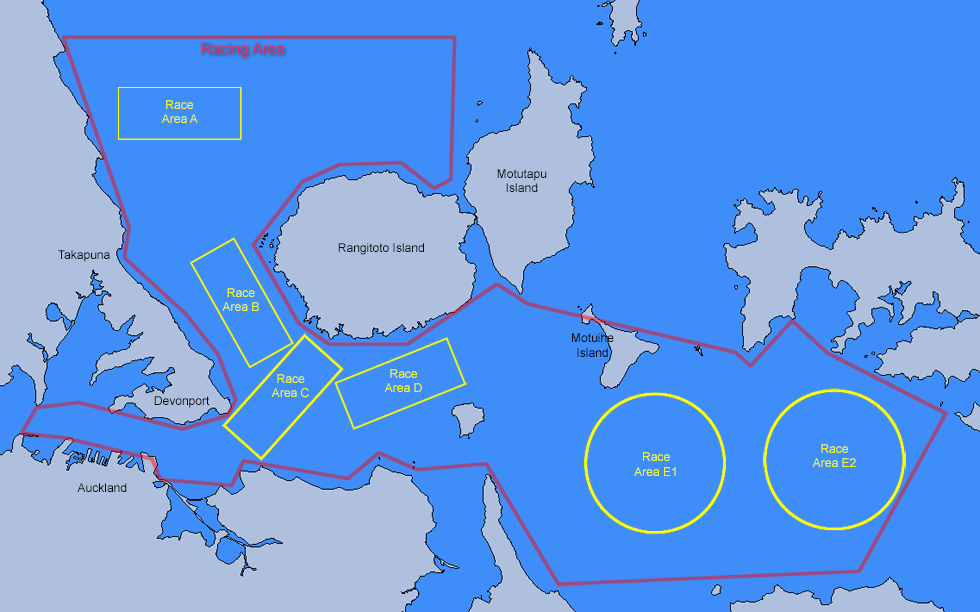|
The Course Areas labeled above are designations used by the Race Director, who may select the approriate area race by race depending on sailing conditions. The rectangular courses show typical orientations, though a course may be set and modified as wind speed and direction shift. The Race Area for a given race does not need to be within these specific outlines. The choice of Course Area is announced by the Race Director by 10:00am on the morning of the race, subject to change as needed. The specific geometric configurations, such as precise orientation, length, and number of legs of the Race Course are announced just prior to the beginning of the race. Areas A, B, C, D above are in Course Area 1, which are the preferred locations. Within that, Race Director Iain Murray has declared that for the Prada Cup Semi-Finals and Final when possible the general region of Race Areas C and D will be used. When the wind is lighter, and especially when it is light and from the NE, Race Area A is often the choice, to avoid the interference of Rangitoto and other land features. Areas E1 and E2 are in the Protected Area, which may provide more shelter when seas and wind are heavier. The Race Areas and Course Areas for the 2021 America's Cup and the Prada Cup were set by the Defender and Challenger of Record, announced in August 30, 2018, in COR/D Notice to Competitors 7. |
||||||||||||
|
The Race Courses are set within the overall "Racing Area" also named in the COR/D 7 announcement. The area west of Motuihe Island is designated Course Area 1. The area east of Motuihe, designated Course Area 2, offers some protection for racing when conditions are rough. Course Areas 1 and 2 overlap slightly. A closer look:
|


